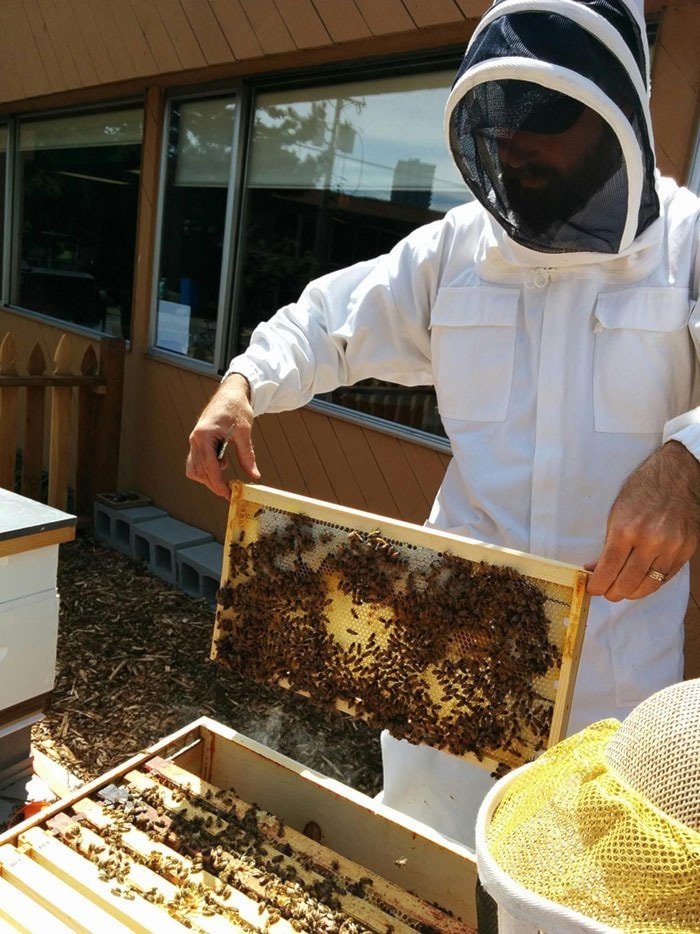James Bay New Horizons is a buzz with some new friends.
As part of a new community-based pilot project, New Horizons has installed two new bee hives and a pollinator garden to help teach the community about bees.
“We started picking up on the fear that people have about bees. I was amazed how automatically you say 'bee' and people have this instant reaction of fear,” said Sue Ann Gentry, project volunteer. “There are lots of opportunities to educate people about the neonicotinoids issue, pollinators, what they do and the honey bees.”
The two bee hives (one of which came from a beekeeper in Oak Bay and the other from James Bay) were installed about a month ago, nestled next to the building so people can watch the thousands of bees at work.
The pollinator garden sits at the entrance and consists of a number of plants that were planted intentionally for certain types of pollinators, such as bees and hummingbirds.
And the bees are already busy producing honey, building up the hive and collecting pollen and nectar from as far away as Dallas Road stretching to downtown Victoria, according to beekeeper Chris Adams.
“It's a great opportunity for people to see the bees more closely than they might otherwise,” Adams said. “It's important to bring bees back into the public eye. For a long time, while people go to the store to buy honey, they haven't necessarily connected that with the presence of bees.”
The $4,200-project (which was made possible by a grant from the City of Victoria) is already generating interest from people.
“People love the garden. All the time we're out here, people stop and ask or say they've been watching the bees,” Gentry said.
She hopes the City of Victoria will consider implementing the idea as well.
“We're hoping this is a model that the city can use in all parks in Victoria,” she said. “It's a beautiful symbol for hope really.”
Adams, who checks on the bees every few days, said looking after the bees is therapeutic.
“For many people, having something as interesting as a bee is therapeutic. In my experience, you can watch the bees come and go for hours,” he said. “Just having creatures that are going about their day and we can watch them is really important. They have a right to be here as well. We can design our human landscapes to co-exist with those creatures. It doesn't have to be a mutually-exclusive world. It works much better if they're together.”
Next year, they hope to expand the program to include workshops on bees and bringing in children from local schools to see them.
